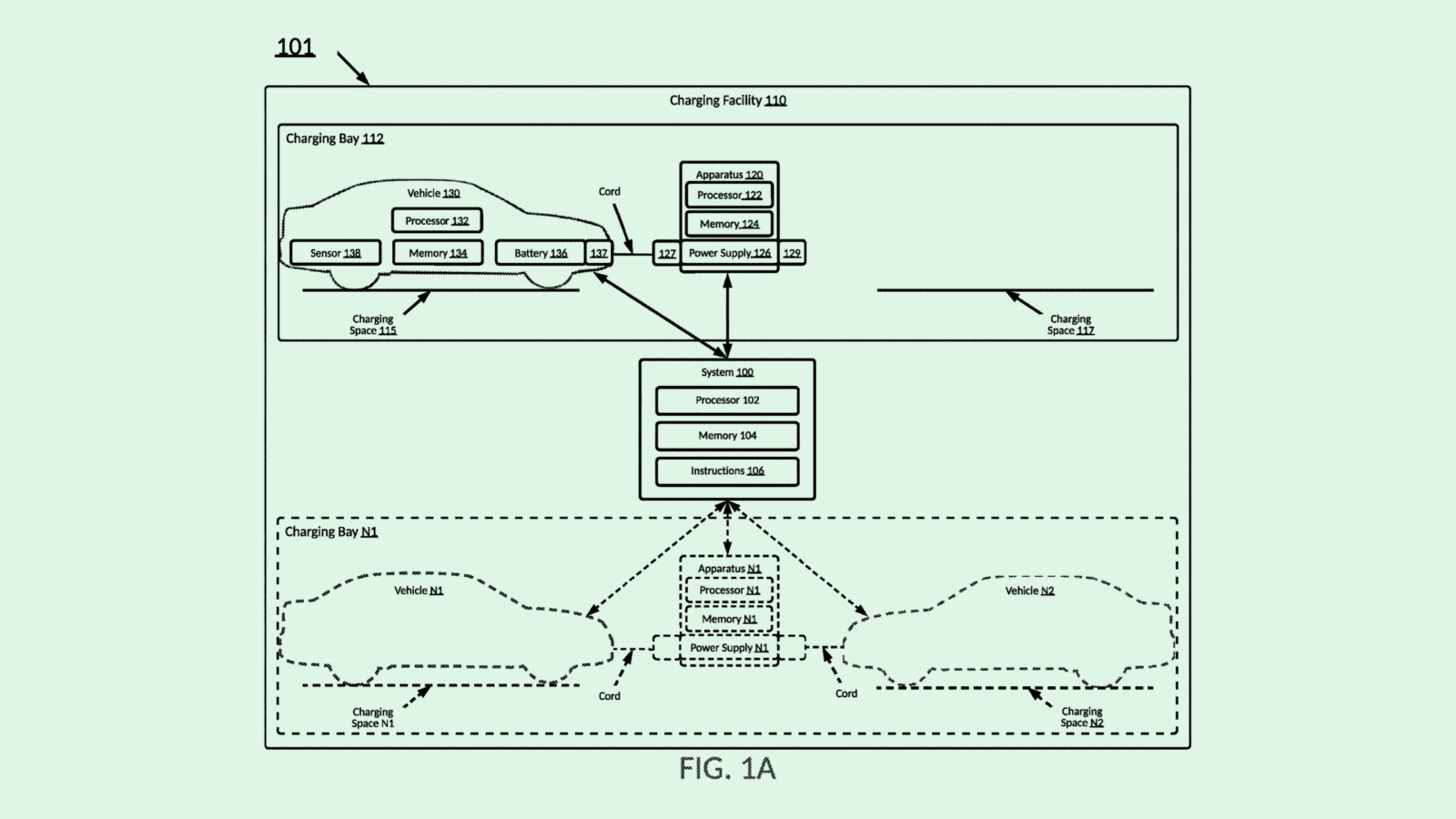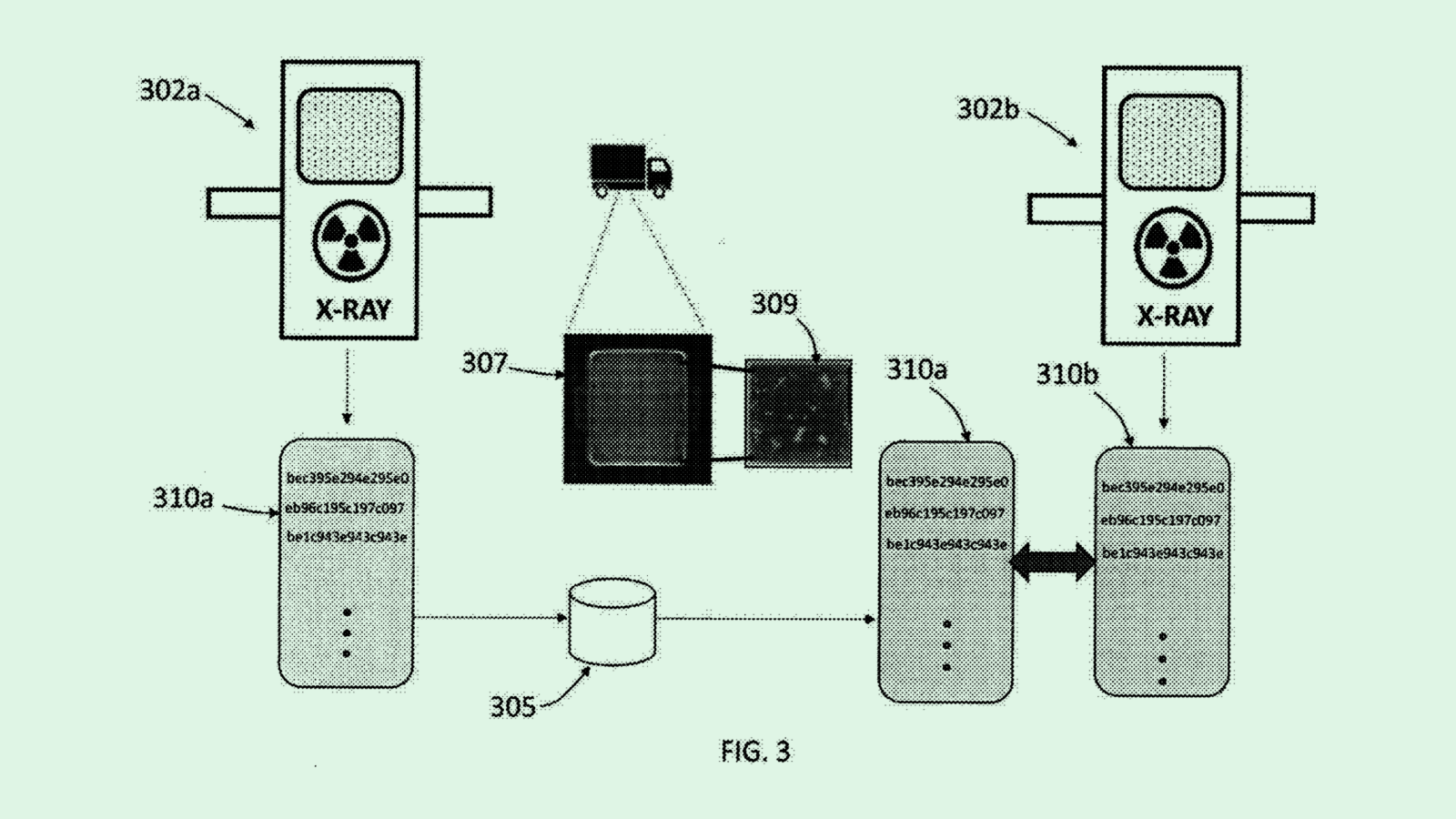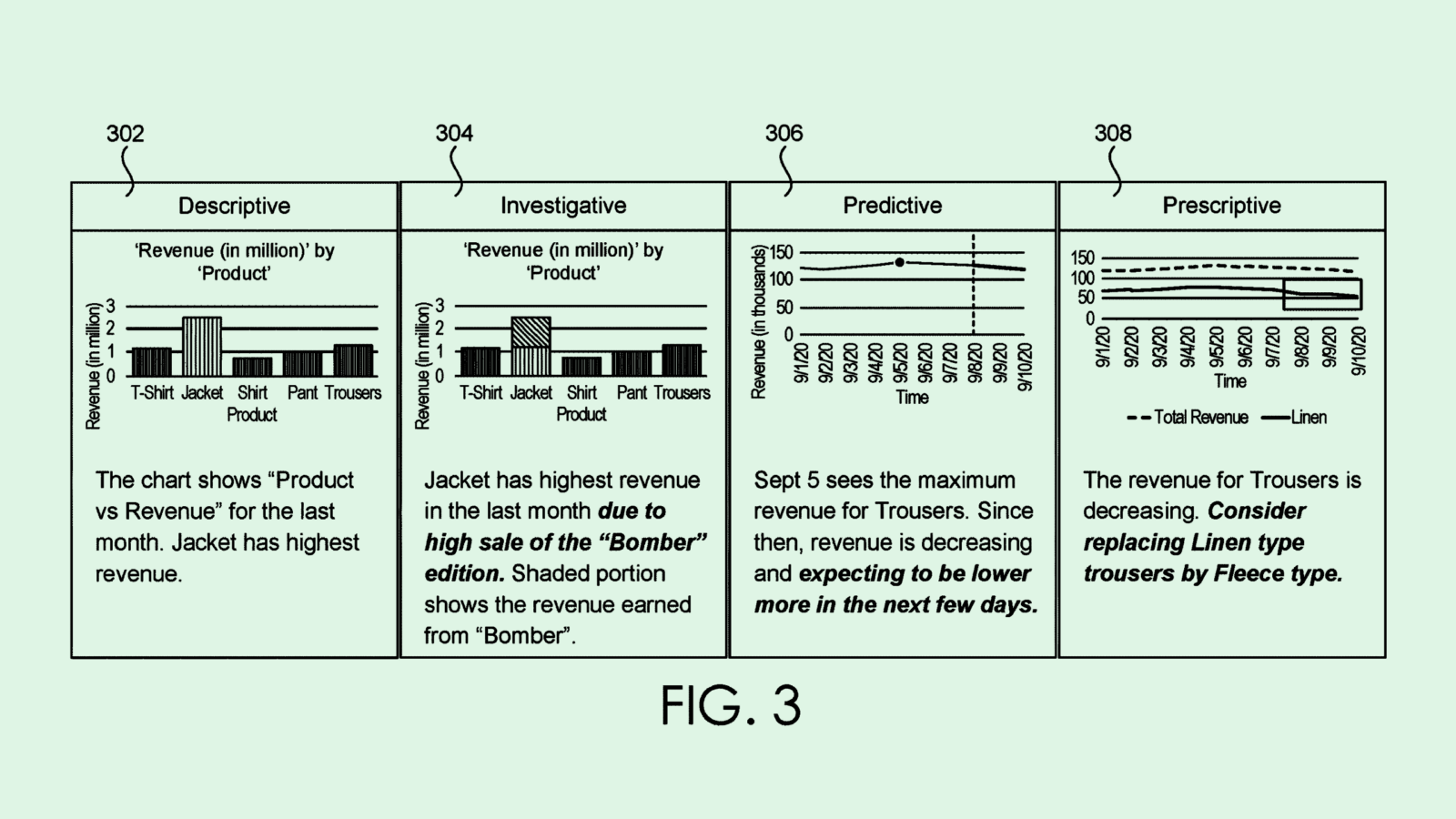Happy Monday and welcome to Patent Drop!
Today, a Toyota patent to keep the fairness in EV charging highlights that automakers are paying attention to the logistics of electrification amid changing US legislation. Plus: Intel makes sure its chips are up to snuff, and Adobe takes the work out of data visualization.
Let’s dive in.
Toyota’s Power Balance
Toyota wants to make sure EVs get charged in the right order.
The company seeks to patent a system for “scheduling delivery of charge to electric vehicles.” Toyota’s system essentially adjusts charging priority between vehicles at a charging station based on which vehicle needs to be charged by what time, aiming to balance the utilization of charging resources.
Toyota’s system takes into account several factors to decide the order in which vehicles are charged: the amount of charge it has, the amount of charge they need, and how long the vehicle has to charge. Under certain conditions, the system will pause charging one vehicle in favor of charging another. If another vehicle comes in with a lower requested charge and a quicker charge time, the facility may switch to charging the new vehicle before resuming the other one.
For example, if one customer needs to take their vehicle from 20% to 100% and the process will take an hour, but another just needs to go from 50% to 60% in 15 minutes, Toyota’s facility would briefly pause the longer charging process. If a station has an excess of charging requests, Toyota could redirect vehicles to different charging facilities along their respective routes.
The filing also mentions other solutions to balance EV charging demand, including bidirectional charging, which uses vehicles as “mobile microgrids that can assist in the supplying of electrical power to the grid … and/or reduce the power consumption when the grid is stressed,” as well as slowing the charging flow in extreme weather events to “help minimize the chance for an outage.”

Toyota is one of many vehicle manufacturers looking into systems to manage the onslaught of electric cars in need of some juice. Ford has filed to patent several charging tech systems, including a charging scheduling system with a similar methodology to Toyota’s and tech to monitor power grid stress while charging. Honda, meanwhile, has sought to patent a charging management system that involves incentives for customers.
With the popularity of its Prius model over the last decade, Toyota is easily the biggest provider of hybrid electric vehicles. Since 2021, the company has invested $17 billion in electric manufacturing in the US, including $1.3 billion announced last month for a plant in Kentucky.
But compared to other automakers that have embraced EVs, Toyota has been doubtful of the popularity of fully electric rides. In an interview with Automotive News published in early March, Toyota CEO Ted Ogawa said that fully electric vehicles will only make up 30% of the new vehicle market by 2030, and that the company was better off buying carbon credits than to “waste” money on battery electric vehicles.
“Our starting point is what the customer demand should be,” Ogawa said in the interview. “We are respecting the regulation, but more important is customer demand.”
However, new regulations may ramp up that demand: The Environmental Protection Agency announced last week new emissions limits designed to require all new passenger vehicles sold domestically by 2032 to be fully electric or hybrid. The decision, which increasingly cuts the amount of pollution that tailpipes are allowed to emit, marks one of the nation’s most significant climate regulations yet.
One other consideration: The electric vehicle wave faces an obstacle with the slow pace of charging infrastructure growth. Patents like these may signal that the company is joining its counterparts by testing the waters with electric vehicle infrastructure, aiming to keep up with both competition and legislation.
Intel’s Inspector Gadget
Intel is making a chip and checking it twice.
The company is seeking to patent methods for “preventing the counterfeiting and tampering for semiconductor devices.” Intel’s system gives semiconductors multiple close inspections as they go from manufacturer to customer to ensure that fake chips aren’t running amok.
Intel notes that counterfeit chips present a major security risk if they infiltrate “critical applications in the military and medical sectors. Identifying them is difficult, however, if they’re “functionally equivalent” to authentic ones. “The security measures need to begin with the manufacturers and continue through the supply chain to a final authentication by the end consumer.”
Intel’s system aims to authenticate its chips via physical security mechanisms and digital security methods. For physical security, Intel’s system relies on laser-marking tools and X-ray inspection tools to leave behind and capture specific etchings for “unit-specific variations.” This X-ray tool also checks for non-critical defects that may be unique to that specific chip.
Those markings serve as unique identifiers, or “fingerprints” for the chip, which are then converted into a “digital hash,” or a string of characters that serves as a digital identifier. As the chip moves from manufacturer to logistics to delivery to customer, these fingerprints are re-hashed via the same hashing algorithm that created the original digital hash, and compared along the way. If the chip is authentic, then the digital hashes will be “substantially overlapping,” Intel noted.
This kind of inspection as the components trade hands helps prove both the authenticity of the device and if something goes wrong can help track down cracks in the supply chain.

Dedicated Patent Drop readers may recognize this filing from our “Extra Drops” section in late February. However, given that this patent comes from federally sponsored research, and that Intel is in the news for its massive government grant to plunge into its chip factories, we felt it fitting to bring it back around.
The company was awarded $8.5 billion from the Biden administration as part of the CHIPS Act, legislation that was passed in 2022 to boost US semiconductor manufacturing. The company also could receive another $11 billion in loans via this deal. The company said the funding would go to factories and research centers in Arizona, Ohio, New Mexico, and Oregon. Intel CEO Pat Gelsinger noted that the Ohio factory would specifically be for the fabrication of AI chips, both for its own needs and for other chip designers.
The company’s effort to boost US manufacturing of chips could lead to around 20% of logic chips being produced domestically, “reducing dependency on Asian manufacturing,” said Ido Caspi, research analyst at Global X. “Through its grants and investments, Intel aims to position the US as a key player in the production of cutting-edge logic chips, currently manufactured exclusively overseas,” said Caspi.
This could also aid its efforts in the AI race, said Caspi. As it stands, Intel is far behind the likes of Nvidia, which reportedly holds 80% of the AI chips market share. However, the company’s position as both the designer and manufacturer could set it apart in the industry, he noted. Constructing plants that are capable of producing chips for both itself and other firms that don’t manufacture their own chips, such as Nvidia and AMD, may also set Intel up for success.
“These capabilities position Intel to potentially increase its market share in the AI chip sector significantly in the coming years, leveraging its dual role to cater to a broader spectrum of the market’s needs,” said Caspi.
Plus, as this patent specifically aims to keep its chips on lock, adding an extra layer of security to verify quality only serves to help its quest for market share.
Adobe Crunches the Numbers
Adobe wants to go above and beyond the average pie chart.
The company wants to patent a system for “generation and presentation of advanced insights.” Adobe’s system essentially uses machine learning to automate data visualization as well as to provide in-depth insights to explain its graphics.
While the availability of data is becoming “increasingly pervasive and plentiful,” Adobe noted that deriving its meaning can be time-consuming. Conventional tools for data visualization tend to “use a template to generate a narrative. As such, the narratives vary very little from one instance to the next, thereby reducing their effectiveness.”
Adobe’s system first takes in user data to create a visual representation, such as a pie chart, line graph, or bar graph. The system then uses a machine learning model to generate natural language insights that tell the story behind the data.
These insights could be anything from a description of trends, understanding of outliers, predictions of future outcomes, exploring cause-and-effect relationships between data points, or providing recommendations. Finally, it will align the text style (i.e., “formality, conciseness,” Adobe notes) of these insights with user preferences and present them via a user interface.
For example, if you feed Adobe’s system a table of raw sales data, it may come back with a presentation breaking down what sold and what didn’t over a certain period of time, and giving recommendations on what kinds of products to push in the future. “As opposed to a user searching for data, running analysis on data, and continuing this cycle until the information desired is identified, a user is efficiently presented with insightful information,” Adobe said.

This tech adds to some recent Adobe inventions that go after AI-powered business tools. The company’s patent activity includes a context-based AI summarization tool, a system for creating niche language models to spice up AI-generated text, and a fact-checking tool for PDFs. Plus, the AI offerings that Adobe currently has available include generative AI marketing, advertising, and analytics tools through Adobe Sensei.
It makes sense that Adobe is going after AI business tools: Enterprise contracts are its major moneymakers. In its earnings report from mid-March, the company attributed its 16% growth for remaining performance obligations to enterprise strength across its product suite. Adobe struck deals last quarter with companies such as Berkshire Hathaway, Accenture, Porsche, and Starbucks.
AI is exceptional at making sense of large amounts of data and extrapolating numbers into understandable insights and predictions, making it a good fit for enterprise use cases. However, unlocking these benefits is possible “only if done right,” said Yusuf Khan, head of data science at AI enterprise content company Constellation.
“The GenAI that we have currently still suffers from factual inaccuracies, which, depending on the context, can be counterproductive,” Khan said. “If the initial prompts and parameters are not set up correctly, it could lead to more manual work than to begin with.”
But moving past current obstacles and adopting AI on a broader scale could have a massive impact on productivity, he said. “There are technologies that are aimed at improving prediction generation, and as such we will continue to see productivity increase over time as we continue to automate more mundane data analytics tasks,” he said.
Extra Drops
- Apple wants to keep your Vision Pro from running a fever. The company is seeking to patent “active cooling” for a head-mounted display.
- Ford wants to take the wheel in bad weather. The company filed a patent application for “autonomous vehicle operation in snow.”
- Google wants to know if you snore. The company is seeking to patent a system for improving measurement of sleep data by classifying users “based on sleeper type.”
What Else is New?
- Boeing CEO Dave Calhoun will step down at the end of 2024. Chairman Larry Kellner is also stepping down, while head of its commercial airplane unit Stan Deal has left effective immediately.
- The EU launched an investigation into Apple, Alphabet and Meta under new Digital Markets Act tech legislation relating to anti-steering rules.
- Spotify is testing out online education with freemium video courses covering everything from Microsoft Excel to music production.
Patent Drop is written by Nat Rubio-Licht. You can find them on Twitter @natrubio__.
Patent Drop is a publication of The Daily Upside. For any questions or comments, feel free to contact us at patentdrop@thedailyupside.com.
